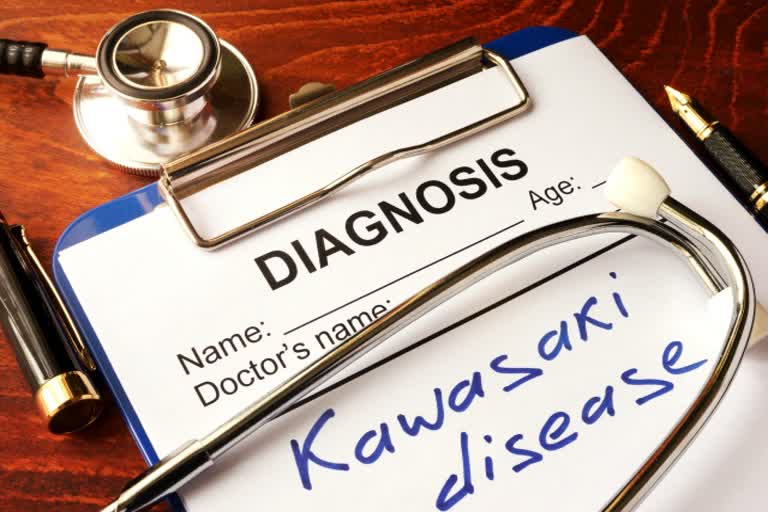Researchers have found that children with Kawasaki Disease remain at an increased risk for cardiovascular events even over 10 years after hospitalisation for their condition.
Kawasaki disease (KD) is a childhood illness that causes blood vessels to become inflamed (vasculitis) and swell. KD is most common in children younger than five years old; however, older children can be affected too. Its exact cause is unknown.
"Without prompt medical evaluation and treatment, serious damage to the blood vessels of the heart may develop. KD is associated with coronary artery aneurysms," said study author Cal Robinson from the University of Toronto in Canada.
In the study, the research team noticed that the incidence of KD has significantly increased in their province over the past two decades. They launched this study to determine the risk and timing of long-term cardiovascular events and death among KD survivors.
"Not knowing the answer, I dug deeper into the published literature about cardiovascular outcomes after KD and found that a significant knowledge gap existed," Robinson said. "It's very important that we better understand the cardiovascular risk after childhood KD. The earlier diagnosis provides opportunities for intervention, which may mitigate the risk of heart disease later in life," Robinson added.
The researchers identified all children up to 18 years of age who survived hospitalization for KD in Ontario between 1995-2018 using health administrative databases. They determined the rates of cardiovascular events, major adverse cardiac events (such as heart attack or stroke) and death, comparing children who had KD with those who were not exposed to the disease.
They looked specifically at four time periods after hospital discharge: 0-1 year, 1-5 years, 5-10 years and more than 10 years. They found that, among 4,597 KD survivors, 16.2 per cent experienced cardiovascular events compared with 5.2 per cent of children without the disease.
They also found that 1.7 per cent experienced major adverse cardiac events compared to 0.7 per cent of children without the disease, and nine died during the median 11-year follow-up period. The most frequent cardiovascular events experienced by KD survivors were ischemic heart disease, arrhythmias, high blood pressure and peripheral vascular disease.
KD survivors were at higher risk of heart problems compared to patients who did not have the disease and they experienced cardiovascular events sooner. "Our study results provide a signal that KD survivors have a higher risk of developing heart disease more than ten years after their initial diagnosis," the study authors noted.
This study is scheduled to be presented at ACR Convergence, the ACR's annual meeting which is happening online, November 5 to 9.
Kids With Kawasaki At Higher Risk Of Cardiac Issues
Kawasaki disease (KD) is a childhood illness that causes blood vessels to become inflamed (vasculitis) and swell. The disease is common in children younger than five years age, however, it increased risk for cardiovascular events in children even over 10 years after hospitalisation for their condition.

Researchers have found that children with Kawasaki Disease remain at an increased risk for cardiovascular events even over 10 years after hospitalisation for their condition.
Kawasaki disease (KD) is a childhood illness that causes blood vessels to become inflamed (vasculitis) and swell. KD is most common in children younger than five years old; however, older children can be affected too. Its exact cause is unknown.
"Without prompt medical evaluation and treatment, serious damage to the blood vessels of the heart may develop. KD is associated with coronary artery aneurysms," said study author Cal Robinson from the University of Toronto in Canada.
In the study, the research team noticed that the incidence of KD has significantly increased in their province over the past two decades. They launched this study to determine the risk and timing of long-term cardiovascular events and death among KD survivors.
"Not knowing the answer, I dug deeper into the published literature about cardiovascular outcomes after KD and found that a significant knowledge gap existed," Robinson said. "It's very important that we better understand the cardiovascular risk after childhood KD. The earlier diagnosis provides opportunities for intervention, which may mitigate the risk of heart disease later in life," Robinson added.
The researchers identified all children up to 18 years of age who survived hospitalization for KD in Ontario between 1995-2018 using health administrative databases. They determined the rates of cardiovascular events, major adverse cardiac events (such as heart attack or stroke) and death, comparing children who had KD with those who were not exposed to the disease.
They looked specifically at four time periods after hospital discharge: 0-1 year, 1-5 years, 5-10 years and more than 10 years. They found that, among 4,597 KD survivors, 16.2 per cent experienced cardiovascular events compared with 5.2 per cent of children without the disease.
They also found that 1.7 per cent experienced major adverse cardiac events compared to 0.7 per cent of children without the disease, and nine died during the median 11-year follow-up period. The most frequent cardiovascular events experienced by KD survivors were ischemic heart disease, arrhythmias, high blood pressure and peripheral vascular disease.
KD survivors were at higher risk of heart problems compared to patients who did not have the disease and they experienced cardiovascular events sooner. "Our study results provide a signal that KD survivors have a higher risk of developing heart disease more than ten years after their initial diagnosis," the study authors noted.
This study is scheduled to be presented at ACR Convergence, the ACR's annual meeting which is happening online, November 5 to 9.


